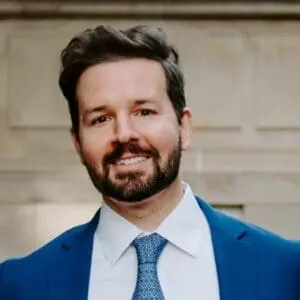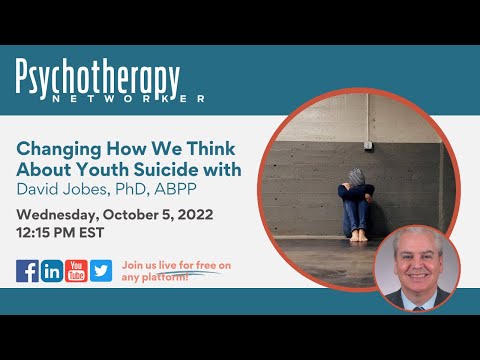Every two hours and 11 minutes. According to the Centers for Disease Control and Prevention (CDC), that’s how often an American under the age of 25 completes suicide. It’s a sobering statistic, but some suicide experts and researchers say that figure is only part of a much larger, much more dire picture of suicide among adolescents, teens, and young adults that’s often overlooked.
There’s no question that youth suicide is—and has long been—a mounting problem. According to the CDC, between 2007 and 2017, the adolescent and teen suicide rate climbed steadily year over year. Suicide has now become the second leading cause of death for young people between ages 10 and 14 and 25 and 34, only behind unintentional injuries.
Over the last two years, however, researchers have been scrambling to quantify the pandemic’s impact on the suicide rate. Comprehensive data are still rolling in, but in November 2021, a statistic in a report from the CDC’s National Center for Health Statistics grabbed headlines: between 2020 and 2021, the overall suicide rate had fallen by three percent. That wasn’t all: that drop had occurred on top of another three percent drop from the year before.
While careful not to downplay the enduring seriousness of the suicide epidemic, mainstream media seized on the news. After all, these numbers seemed to defy all expectations. How had the combination of a deadly virus, social isolation, mass unemployment, political and social unrest—and the marked increases in depression, anxiety, trauma, loneliness, and substance use that ensued—not led to a spike in the rate? How is it possible that instead, it led to the largest annual decline in nearly four decades?
Some media outlets pointed to the quick mobilization of preventive care and teletherapy services, government stimulus, and an increase in community connectedness and neighborly goodwill as possible explanations for the drop. Others couched these attention-grabbing statistics with the caveat that this was the overall suicide rate, and that rates among adolescents and teenagers had continued to increase, translating to more than 500 children between ages 10 and 14, and 6,000 between ages 15 and 24 who completed suicide in 2020, according to CDC figures. Adolescent and teenage girls and Black and Hispanic males in particular saw substantial spikes.
But there’s a larger issue in how the recent data were reviewed and disseminated. Most outlets missed an increase in plain sight: they were reporting on suicide completions, not ideation. And ideation numbers—especially as they concern adolescents and teens—are alone a major cause for alarm. For mental health professionals who specialize in suicide and suicidality, this oversight isn’t just a reporting problem: it’s a fundamental problem in the way we think about, study, and treat suicide.
The Bigger Picture
Last October, the Substance Abuse and Mental Health Services Administration (SAMHSA) released its National Survey on Drug Use and Health, with some shocking statistics: in 2020, nearly 629,000 adolescents and teens between the ages of 12 and 17 made suicide attempts. The New York Times, The Guardian, USA Today, and many other mainstream publications took attempts into account when discussing suicides, but they neglected to mention the approximately 1.3 million adolescents who had made suicide plans, and the estimated three million who had serious thoughts of suicide.
An already strained healthcare system was left to deal with the fallout. Emergency room visits by adolescents and teenagers skyrocketed during the first seven months of lockdowns. According to CDC data, hospitals saw a 24 percent increase in mental health-related emergency visits for children ages five to 11, and 31 percent for those ages 12 to 17.
This is where the spike had occurred—in ideation. But the statistics went mostly unreported. For professor, researcher, and clinical psychologist David Jobes, that’s unsurprising.
“Our society, the field of psychotherapy included, is preoccupied with the deaths and attempts,” he says. “That’s understandable, but we’re overly focused on behavior and trivializing the impact of ideation. We need to be much more focused on this upstream issue. If we were, we’d have fewer people downstream making attempts and completing suicide.”
An internationally recognized suicidologist, Jobes is Director of the Suicide Prevention Lab at The Catholic University of America, as well as a former president of the American Association of Suicidology, who’s studied and written extensively about suicide. He’s also the developer of the Collaborative Assessment and Management of Suicidality (CAMS) model, described by the CAMS website as “a therapeutic framework for suicide-specific assessment and treatment of a patient’s suicidal risk.” In other words, it takes the upstream approach.
CAMS boasts eight correlational, replicated, published studies, as well as five published randomized controlled trials, all of which support the intervention. But despite its accolades, Jobes says he’s received pushback for his focus on ideation. “I’ve had papers rejected because we’ve only reduced to suicidal ideation and didn’t have significant findings on attempts,” he says. “A lot of the big, proven treatments remove attempts but don’t touch ideation. Of course you want to decrease completions and attempts, but ideation is up for three million young adults and teenagers—which reflects a clear level of despair and distress. It’s our biggest problem as a nation.”
The Research Problem
So why aren’t we focusing more on ideation? For one, all suicide—not just ideation—remains relatively understudied. Over the last five years, the National Institutes of Health (NIH) has dedicated between $68 million and $140 million annually to studying suicide and between $35 million and $80 million to studying suicide prevention. While those figures might seem large, NIH spent between $327 million and $493 million on sleep research during the same period, in which it had a total budget of between 30 and 42 billion dollars.
Many NIH studies contain small sample sizes, which makes it hard to capture conclusive data for an issue as complex as suicide. Funding generally lasts four to five years, which some critics say isn’t enough time to fully examine suicide or suicidality. Others say years-long suicide studies are impractical, given that some participants may complete suicide before the trial is complete, skewing the data. Of course, there’s also an aversion to orchestrating and approving these trials, given the possibility that participants could die.
Studying suicidality is even more difficult when it comes to children, in part because it’s so difficult to spot. A 2020 study published in the Journal of Affective Disorders found that roughly one-third of children who completed suicide had no known history of suicidal ideations or self-harm. Sadly, that doesn’t mean ideation in children is uncommon. A 2020 study published in The Lancet found that among children ages 9 and 10, one in 12 reported having had suicidal thoughts.
The problem preventing our society from more skillfully addressing youth suicide is threefold: ideation is overlooked by the popular press, understudied in research circles, and sometimes even willfully ignored by the clinical community.
What this means is that when researching suicidality, conclusive data that inform treatment are hard to come by, especially as they pertain to adolescents and teenagers. Case in point: a meta-analysis published in a 2020 issue of Psychological Bulletin, led by clinical child psychologist Kathryn Fox, concluded that 50 years of randomized control trials for suicide-prevention interventions have shown no increase in treatment efficacy. No wonder these studies elicit a shrug from the research community! They’re hard to manage and fund, and even harder to justify.
So perhaps it’s not surprising that we’re hearing more about suicide completion than ideation in the popular press. Completion is easily measurable; ideation is harder to pin down. The result is a vicious cycle, in which we focus more on completion because we hear less about ideation, and we hear less about ideation because we focus more on completion.
Fear, Responsibility, and Courage
It’s not just the research community and the media that are mishandling the problem of ideation. Jobes says therapists are playing a part too: they’re practicing defensively, referring out at the first sign of suicidality because they worry a suicide completion isn’t far behind.
“I’m discouraged by how many clinicians avoid working with clients who are or may be suicidal,” he says. “It’s not just that many clinicians don’t know how to assess and treat ideation. There’s this attitude of ‘let the psychiatrists handle this; let the real doctors handle this. It’s too much for me.’”
More than 30,000 clinicians all over the world are trained in the CAMS model. But what drives many of them to get training in the first place, Jobes says, is the fear that if they’re not properly trained and a client self-harms or completes suicide, they’ll be held liable. Many times, he adds, properly trained clinicians—who can make a difference—will still refer out.
“That’s the irony,” Jobes says. “A person who’s well-trained can do lifesaving work. We have effective, proven treatments that are much better than hospitalizing people who could easily be treated, pushing medications that don’t really help with suicide risk, or circling the wagons and trying to avoid everyone who’s suicidal. That doesn’t help anybody, and that’s when lives are lost.”
Stacey Freedenthal, a therapist and professor at the University of Denver’s School of Social Work, who specializes in studying and treating suicide, agrees. “There’s research that’s looked at the practices of therapists whose clients disclosed suicidal thoughts, and the number that rushed to call the police or send them to the emergency room is really disheartening,” she says. “I know hospital workers who complain that someone was sent to them when their therapist could’ve just done a risk assessment.”
Freedenthal says she hopes therapists can shift their thinking about ideation, especially as it pertains to adolescents, teens, and young adults. As a social worker, she says she tends to look for the systemic influences on ideation, including issues that young people are especially passionate about.
“So many young people I talk to in and outside my practice have a sense of hopelessness about the state of the world today,” she says. “In the last couple years, there’s been a lot more written about social justice issues in relation to suicidality. Poverty and unemployment are linked to suicidality. Gun violence is linked to suicidality. Climate change is linked to suicidality. Abortion bans are linked to suicidality. These are things young people care about immensely, and they’re causing a lot of fear.”
Freedenthal says recognizing these connections will help therapists realize that they can treat ideation—and may have already been doing so—by discussing their young clients’ anxieties around the larger social picture. But she hopes that even if the topic of suicide doesn’t come up on its own, clinicians will muster a little courage and lean into hard conversations about it. “I want therapists to ask kids about suicidal thoughts, even if they’re afraid to do so, even if they don’t believe their client may be having them,” she says. “We have a professional responsibility to do that, not just do what’s convenient for us.”
A Broken System on the Mend?
The problem preventing our society from more skillfully addressing youth suicide is threefold: ideation is overlooked by the popular press, understudied in research circles, and sometimes even willfully ignored by the clinical community.
The situation remains dire. Last October, the American Academy of Pediatrics, the American Academy of Child and Adolescent Psychiatry, and the Children’s Hospital Association released a joint statement declaring a national emergency in children’s mental health and calling on government policymakers to take action.
Slowly, those government gears seem to be turning. In July, the Biden administration rolled out a reworked version of the National Suicide Hotline’s Lifeline network, a free call service created in 2005 that comprises roughly 200 call centers nationwide, operating 24/7, that connect callers with trained crisis counselors.
The revamp finalizes a three-year collaboration by the Department of Health and Human Services, the Federal Communications Commission, and the Department of Veterans Affairs, which includes $432 million in federal funding—an 18-fold increase from the previous budget.
“This cross-government effort has been years in the making,” said FCC Chairwoman Jessica Rosenworcel of the initiative, “and comes at a crucial point to help address the mental health crisis in our country, especially for our young people.”
One of the most recognizable changes is the implementation of a new hotline phone number, 988. The previous number (1-800-273-TALK) and text feature (users can text HOME to 741741) will remain active, but the hope is that this addition will make it easier for people in crisis to reach the hotline.
Other goals include improved response times, the ability to handle more calls and texts, and the ability to route more calls to crisis centers in the caller’s vicinity. A failure to answer has long been a weakness of the network. According to a Wall Street Journal review published in July, calls to the lifeline increased 92 percent between 2016 and 2021, but one out of every six didn’t reach a counselor, amounting to a whopping 1.5 million dropped calls. The average time it took for someone to answer the phone was 45 seconds, and nearly 80 percent of callers who hung up did so after waiting less than two minutes.
In 2021, the lifeline received 3.6 million calls, chats, and texts—a number that’s expected to more than double over the next year. The website for the lifeline reads that states are “at varying degrees of readiness” for the volume increases expected from moving to the new number and adds that additional state and local investment is needed “to further boost the response rates and staffing capacity of call centers facing the greatest demands.”
Freedenthal says the revamp is a step in the right direction. “I’ve found it really useful to be able to tell young people there’s a simple number they can call if they need help,” she says. “Saying it’s 988 doesn’t turn them off as much as if you say, ‘Here’s the number to the suicide hotline.’”
Jobes, meanwhile, remains cautiously optimistic, not just because the new lifeline could help more callers, but because he thinks it could shed light on what needs fixing in our larger, broken institution of mental healthcare. “The hotline is great,” he says. “But I fear what’s going to happen in the potentially lethal gap between someone calling to say, ‘I’m suicidal’ and a thoughtful phone counselor helping them get placed in competent care. That process can take weeks. I think the hotline will expose the fact that we don’t have a good system of care for people at risk, but hopefully that awareness will help us create the infrastructure to develop better interventions.”
Although the new lifeline is in its infancy, it could help solve the problem that ideation is overlooked, understudied, and ignored. Renewed media attention on the hotline is shifting the public focus away from suicide deaths and onto ideation. SAMHSA, which happens to run the lifeline and collects data on calls, could add to the body of research on ideation. And finally, the lifeline is employing counselors who will need to develop the courage to have hard, uncomfortable, and incredibly important conversations about suicide at the ideation stage.
“I really believe we can turn a corner on this,” Jobes says. “If we take the time to understand and validate people’s experiences, and we treat the thing that actually makes them suicidal, then we’re really in the lifesaving business.”
PHOTO CREDIT Pexels/Brian Niles
Chris Lyford
Chris Lyford is the Senior Editor at Psychotherapy Networker. Previously, he was assistant director and editor of the The Atlantic Post, where he wrote and edited news pieces on the Middle East and Africa. He also formerly worked at The Washington Post, where he wrote local feature pieces for the Metro, Sports, and Style sections. Contact: clyford@psychnetworker.org.













